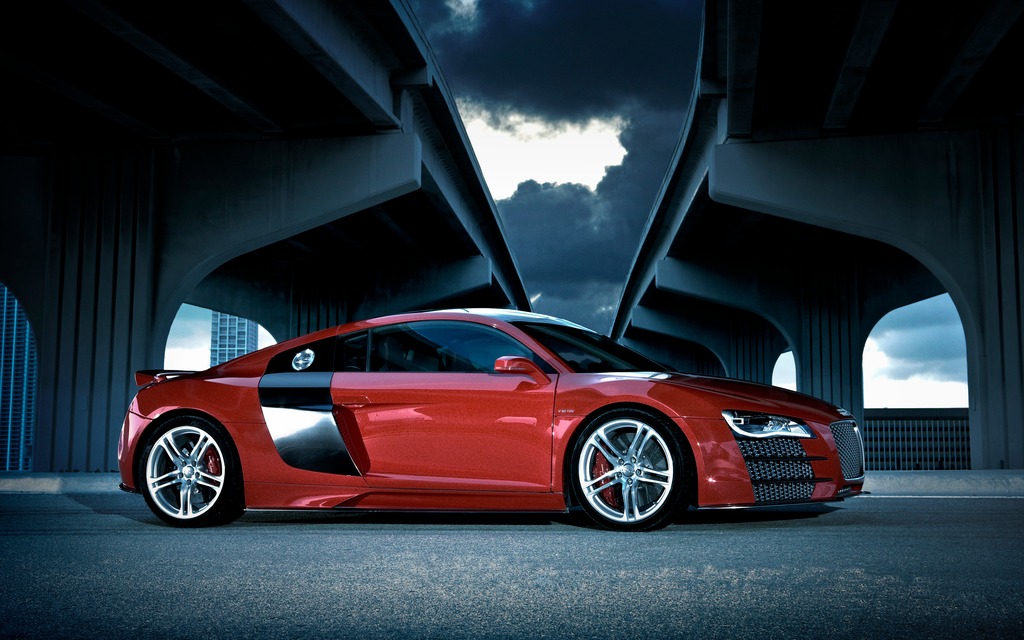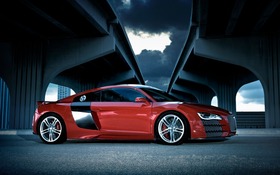25 Years Of Audi's TDI: The Technological Milestones
Audi has developed the TDI engine continuously since its premiere in 1989. In 25 years, the brand with the four rings has since then continuously increased its lead and established numerous milestones.
1970s: Pressure from the oil crisis
Development of the TDI began at Audi in the mid-1970s. The oil crisis gave rise to the task of creating a fuel-efficient new engine. During predevelopment, the developer team of ten Audi engineers decided on the multi-jet process. Systems supplier Bosch developed an electronically controlled, axial piston injection pump that developed up to 900 bar of pressure. Two-spring holders opened the nozzle needles in two stages with different amounts of lift. They enabled the pre-injection of smaller amounts of fuel, which made combustion softer and the acoustics more pleasant.
1989: 2.5 TDI
Audi presented a milestone of technology at the 1989 IAA in Frankfurt am Main: the 2.5 TDI, installed in an Audi 100. The inline five-cylinder engine displacing 2,461 cc was a direct-injection turbo diesel with fully electronic management – the first TDI. No one suspected at that time that it would help the diesel engine to break through to volume automobile production in Europe and would mark the start of a new era. With 88 kW (120 hp) and 265 Nm (195.5 lb-ft) of torque, the latter at 2,250 rpm, it set completely new standards in its competitive environment. The Audi 100 2.5 TDI reached a top speed of nearly 200 km/h (124.3 mph), yet according to the standard valid at that time consumed just 5.7 litres of fuel per 100 kilometres (41.3 US mpg). Beginning in 1994, the five-cylinder engine, equipped with a new radial piston pump, oxi-cat and exhaust gas recirculation, produced 103 kW (140 hp) in the Audi A6. An 85 kW (115 hp) version was available as an alternative.
1991: 1.9 TDI with VTG turbocharger
TDI engines from Audi also embarked on the road to success in mid-size class. The four-cylinder 1.9 TDI made its way to the Audi 80 in 1991, producing 66 kW (90 hp) and 182 Nm (134.2 lb-ft). An updated version with 81 kW (110 hp) followed four years later in the Audi A4. This increase was due primarily to a new turbocharger with adjustable vanes on the exhaust side. The VTG turbocharger enabled smooth and early development of torque beginning at 1,700 rpm.
1997: World's first V6 TDI
Audi did pioneering work again in 1997. A further innovation in the automotive diesel segment was the combination of a V6 TDI with a four-valve cylinder head. The 2.5-litre engine produced 110 kW (150 hp) and 310 Nm (228.6 lb-ft) of torque. The engine presented solutions such as swirl and tangential channels in the intake as well as a radial piston injection pump developing up to 1,850 bars of pressure. The 2.5 TDI was used in the A4, the A6 and the A8, with the last generation producing 132 kW (180 hp).
1999: V8 TDI
3,328 cc of displacement, four overhead camshafts, 32 valves, two VGT turbochargers – the V8 TDI, standard since October 1999 in the Audi A8, was a high-tech statement. Its crankcase was made of high-strength, yet lightweight vermicular graphite cast iron; the charge air and the recirculated exhaust gases were cooled with water. A common rail system – then new at Audi – injected the fuel at a pressure of 1,350 bar. With 165 kW (225 hp) and 480 Nm (354.0 lb-ft) of torque, the V8 TDI was a composed and cultivated engine. It took top speed to a whole new dimension with a figure of 242 km/h (150.4 mph).
2001: 1.2 TDI
Audi set a lasting tone in 2001: The Audi A2 1.2 TDI achieved an average fuel consumption of 2.99 litres per 100 kilometres (78.7 US mpg), a CO2-equivalent of 81 grams per kilometre (130.4 g/mi). The compact five-door with the strictly aerodynamically shaped aluminum body was powered by a three-cylinder engine with a displacement of 1.2 litres that produced 45 kW (61 hp) and 140 Nm (103.3 lb-ft). The engine featured two valves per cylinder, a VTG turbocharger and pump-injector fuel injection with 2,050 bar of pressure, a technology from the Volkswagen Group that Audi introduced the year before. The A2 1.2 TDI remains today the world's only five-door, three-litre car.
2004: 3.0 TDI
The 3.0 TDI introduced in 2004 was the first member of the new family of Audi V-engines with a uniform cylinder angle of 90 degrees, cylinder spacing of 90 millimetres (3.5 in) and timing chains on the rear side. Like all the large Audi diesel engines, it had a lightweight but extremely strong vermicular graphite cast-iron engine block. A diesel particulate filter – new at Audi – cleaned the exhaust gas.
Another first were the piezo inline injectors. They could inject tiny amounts of fuel and open and close extremely quickly to perform multiple, staggered injections. This enabled a finely modulated rise in pressure to a maximum of 1,600 bar and a combustion process that provided for quiet engine acoustics. The V6 TDI was launched in three versions with 150 kW (204 hp), 165 kW (224 hp) and 171 kW (233 hp). It was widely used throughout the model lineup. Audi introduced a second generation in 2009.
2008: V12 TDI
The twelve-cylinder, deployed in the Q7 in late 2008, crowned Audi's TDI technology as the world's most powerful production diesel engine for an automobile. Features included the common rail system with 2,000 bar of pressure, and the two VTG turbochargers. The cylinder bank angle of 60 degrees provided for excellent mass balance and thus supremely smooth running. Displacing 6.0 litres, the V12 TDI produced 368 kW (500 hp) and 1,000 Nm (737.6 lb-ft) of torque, the latter between 1,750 and 3,250 rpm. With it, the big SUV accelerated like a sports car from zero to 100 km/h (62.1 mph) in 5.5 seconds and reached an electronically governed top speed of 250 km/h (155.3 mph).
2009: 3.0 TDI clean diesel
In response to increasingly stringent emissions standards, particularly in the U.S.A., Audi introduced clean diesel technology in 2009. The 3.0 TDI clean diesel had a common rail system with 2,000 bar of pressure and innovative combustion chamber sensors on board. The fine atomization and precise combustion of the fuel provided for low untreated emissions. An SCR catalytic converter (selective catalytic reduction) reduced oxides of nitrogen in the exhaust system. The aqueous additive AdBlue injected into the system decomposed in the hot exhaust flow to ammonia, which reacted with the oxides of nitrogen to form water and nitrogen.
This was followed in 2013 by a new component that consolidated two previous ones: the diesel particulate filter with an SCR coating. Ceramic substrates – aluminum titanate or silicon carbide – on the filter walls take over conversion of the NOx. A downstream ammonia slip catalyst (ASC) converts the remaining ammonia molecules that can be emitted at high loads.











